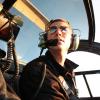First Job- CFI, CFII or Commercial Ops?
What was your first job out of flight school?
44 members have voted
-
1. What was your first job out of flight school?
-
Commercial, tours, photo flights, ferry, etc.6
-
CFI at school trained at7
-
CFI at different school5
-
CFII at school trained at11
-
CFII at different school5
-
Ag/spraying1
-
Military7
-
Other2
-
-
2. How long did you work your first job?
-
1-9 months11
-
1-2 years17
-
3-4 years9
-
5+ years7
-












Recommended Posts
Join the conversation
You can post now and register later. If you have an account, sign in now to post with your account.
Note: Your post will require moderator approval before it will be visible.